On the Syrian frontline, the battle is reaching its crescendo
Islamists are now facing total defeat in Qalamoun, and the Syrian army – in Lebanon – Hezbollah and the Lebanese army earnestly wish to bring this about

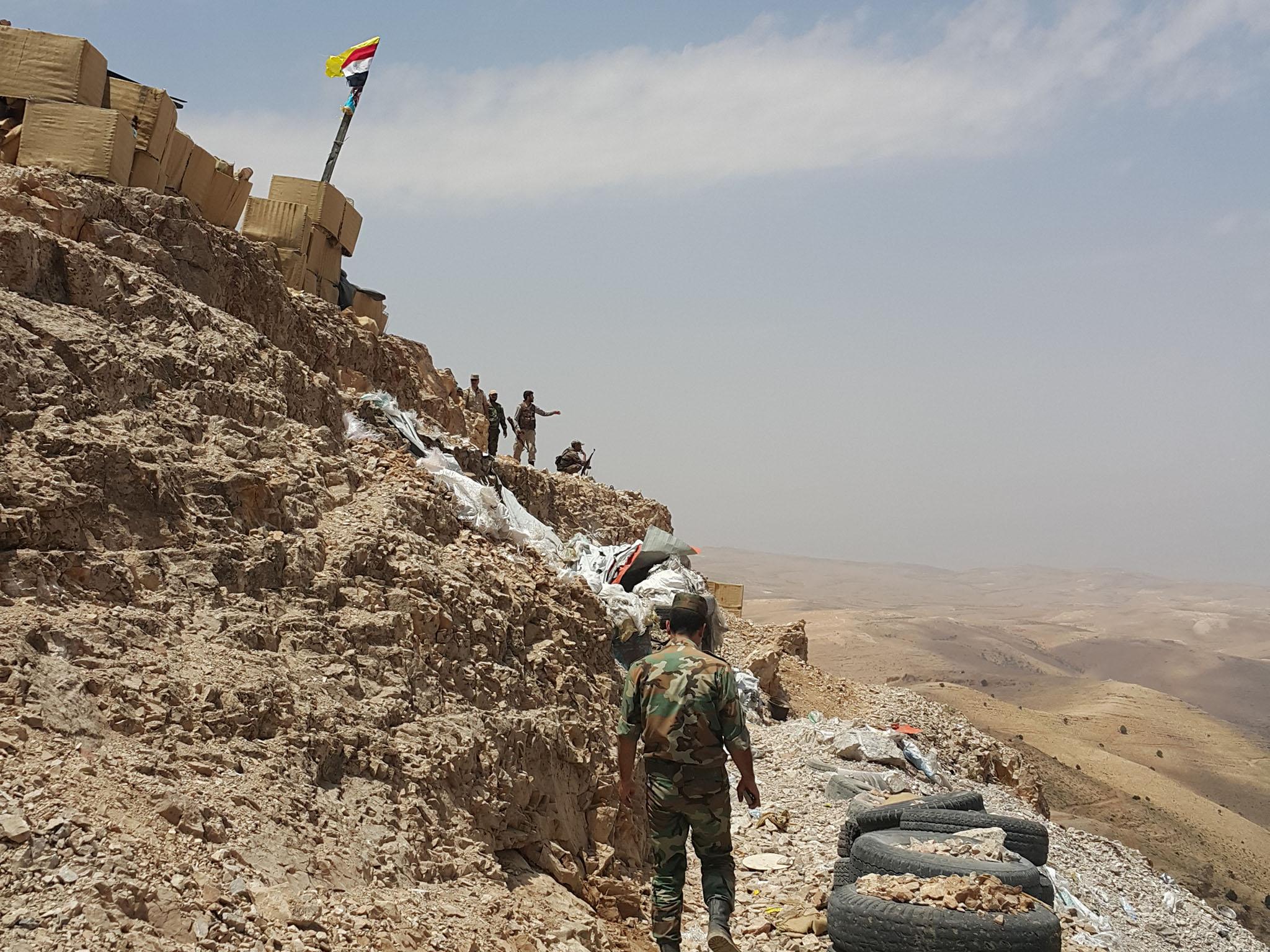
Your support helps us to tell the story
From reproductive rights to climate change to Big Tech, The Independent is on the ground when the story is developing. Whether it's investigating the financials of Elon Musk's pro-Trump PAC or producing our latest documentary, 'The A Word', which shines a light on the American women fighting for reproductive rights, we know how important it is to parse out the facts from the messaging.
At such a critical moment in US history, we need reporters on the ground. Your donation allows us to keep sending journalists to speak to both sides of the story.
The Independent is trusted by Americans across the entire political spectrum. And unlike many other quality news outlets, we choose not to lock Americans out of our reporting and analysis with paywalls. We believe quality journalism should be available to everyone, paid for by those who can afford it.
Your support makes all the difference.Syrian troops are now set up in positions on the Lebanese side of the border between the two countries in their battle to destroy al-Qaeda in the towering mountains of Qalamoun. Corpses rot on the mountainsides here as the Lebanese Hezbollah – fighting now inside Syria – prepare for a final struggle against the Islamists, who are today surrounded on a towering black stone peak to the north. From the heights of the Karra mountain, 7,000 feet above the Syrian-Lebanese border, I could see Syrian troops encamped on top of the two mountains – inside Lebanon.
The Syrian commander in Qalamoun, General Median Abad, tells the truth without hesitation. “Yes, we have our soldiers at two points inside Lebanon – above the frontier road which Nusrah [al-Qaeda] used to enter the Lebanese town of Ersal. Our men are on the Lebanese mountains of al-Sharqia and al-Valilal. You can see their tents.” And sure enough, across the narrow wadi (ravine) which separates us from Lebanon, I can make out the cluster of grey Syrian military tents spread across the top of the two Lebanese hills. The general confirms that he communicates with the Lebanese army – whose tank fire against Nusrah he distantly hears across the valleys – through the Hezbollah, whose forces joined him in attacking al-Karra.
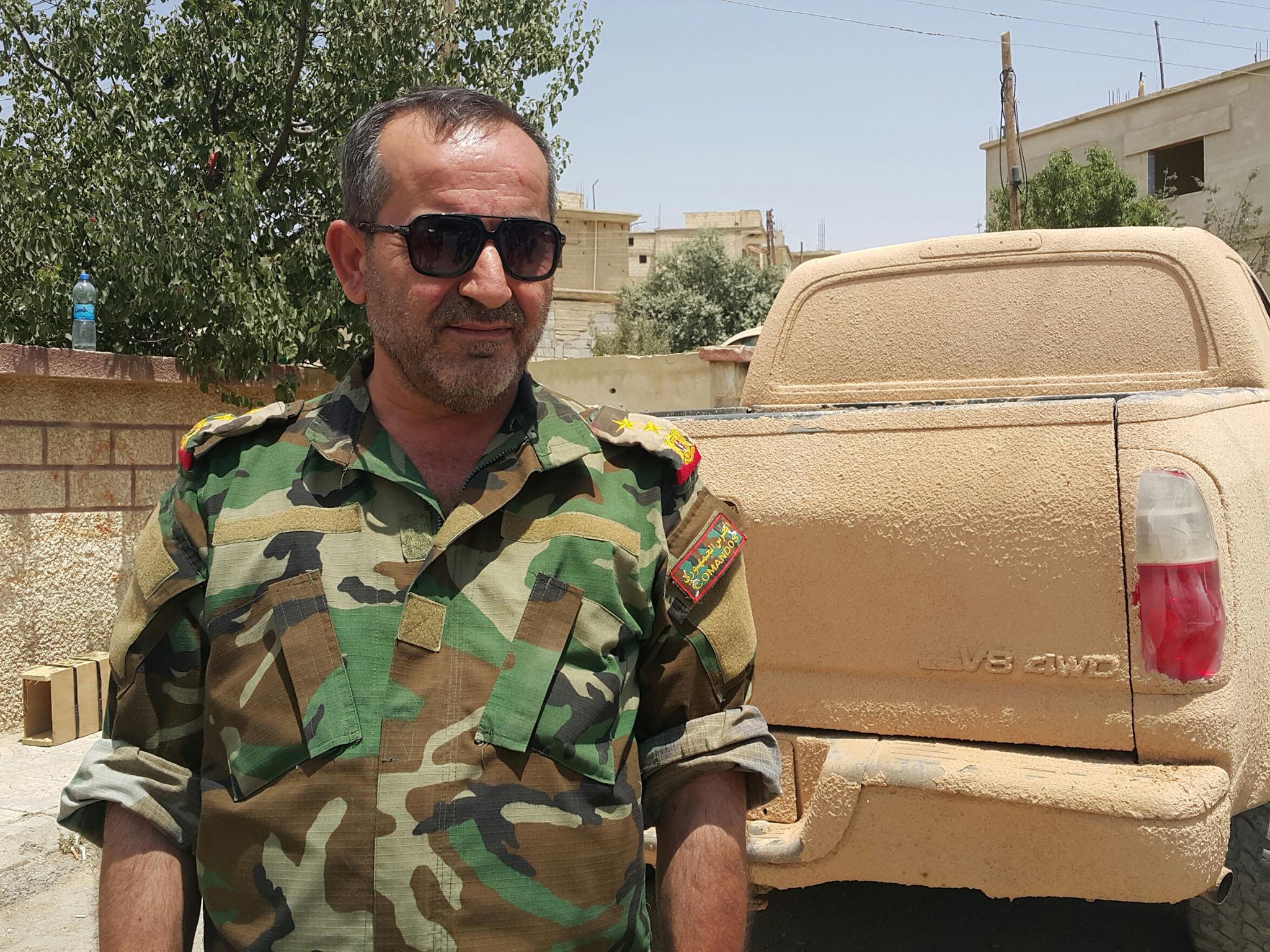
Walking around its soaring heights after the battle, which ended only five days ago, is a dizzying experience. The stench of still unburied Isis bodies, the blast of mountain air tearing at the sandbags across the bleak trenches and earthworks erected by Isis before their last stand, and the network of tunnels – dug through the living rock by the Islamist defenders in the vain hope of withstanding Syrian air attacks – show just how fiercely this battle was fought. Not one Isis fighter survived – which tells its own story – although a remarkable video taken by the victors during the struggle shows a Hezbollah guerrilla telling a dying Nusrah man who is covered in blood: “God be with you” – a remarkable blessing to a dying Sunni from a Shia fighter.
Aboard a pick-up truck, a Syrian officer is opening the khaki body bags of three dead Isis men in a hopeless attempt to identify them. The corpses are swollen in the 46 degree heat, black with corruption, in one case wearing only underclothes. The Syrian troops and Hezbollah fighters watching from a few feet away, many holding their hands to their faces, are unfazed. Theirs was a joint operation against Nusrah – their command centre is in a single storey villa in the village of Fleita – and they say they suffered only wounded in the battle. Doctors on the heights have a medical tent with “Iranian Red Crescent” printed on the side – but there appear to be no Iranians here.
“The Syrian army and the Hezbollah fought for this mountaintop along with the [part-time] national defence forces but it was the Syrian and Hezbollah Special Forces who carried out the battle,” 48-year-old General Abad says. “For us, Hezbollah is a fighting school. We learned from their experience and we taught each other, we were literally training together as we fought and of course we had our artillery.” Syrian army guns and anti-aircraft weapons are spread over the mountains – and one zealous driver has even managed to drive a Russian-made battle tank all the way up thousands of feet of the crumbling rock track to the top of al-Karra.
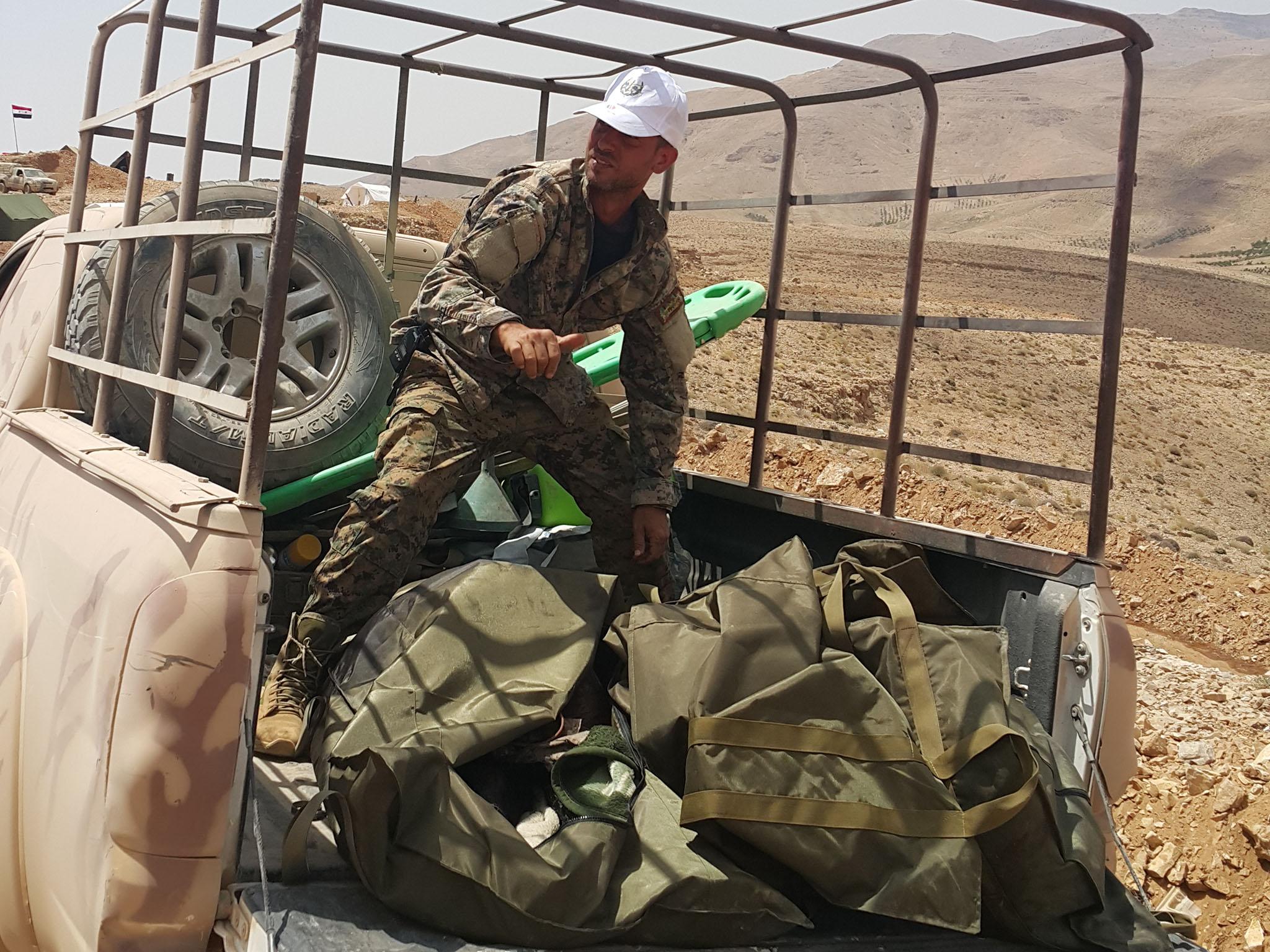
The Lebanese Hezbollah commander, a short-bearded, grey haired and bespectacled man from southern Lebanon who says he is 37 – I know his home town well but suspect he is older than he claims – sat on my right during the soldiers’ lunch under canvas, a meal somewhat tempered by the bodies a few metres away and the insistence of a Hezbollah intelligence officer who filmed my every mouthful of rice and chicken. What the Hezbollah in Beirut, who know me, will make of this video nonsense I have no idea.
But the Hezbollah and Syrian soldiers sat together around the tent and appeared to know each other well, and the Hezbollah officer and his fighters share the thick and intimidating “meta” tea – made from Argentinian leaves – which is a mainstay of all Syrian military meals. Several of the Hezbollah men carried new sniper rifles but most were armed with the familiar Kalashnikovs used by the Syrian army. Their light brown kitty-litter camouflage uniforms were quite distinct from the green and brown battledress of the Syrians.
To the north stands the last Isis fortress. Its defenders lie under black tents and, just to the south and lower down, their future Hezbollah attackers have spread their white tents on the mountainside. There will be more artillery fire – and more airstrikes – in the next few days, according to General Abad. His mountain eyrie will prove to be a perfect vantage point to watch the attack; al-Karra stands 7,020 feet above sea level – the Israeli emplacements on Mount Herman in the Golan Heights to the south are scarcely 2,000 feet higher, and Abad agrees that the Syrians will never leave al-Karra – which is, of course, just inside Syria, now that they have installed themselves on this peak. Military radio aerials already wave like blown wheat above the rocks.
Across to the south-west I could see the Lebanese town of Ersal – once briefly invaded by Isis and Nusrah. Some of its Lebanese military defenders had their throats cut; others – at least nine – are still held captive somewhere in these mountains, probably on the Lebanese side of the border.
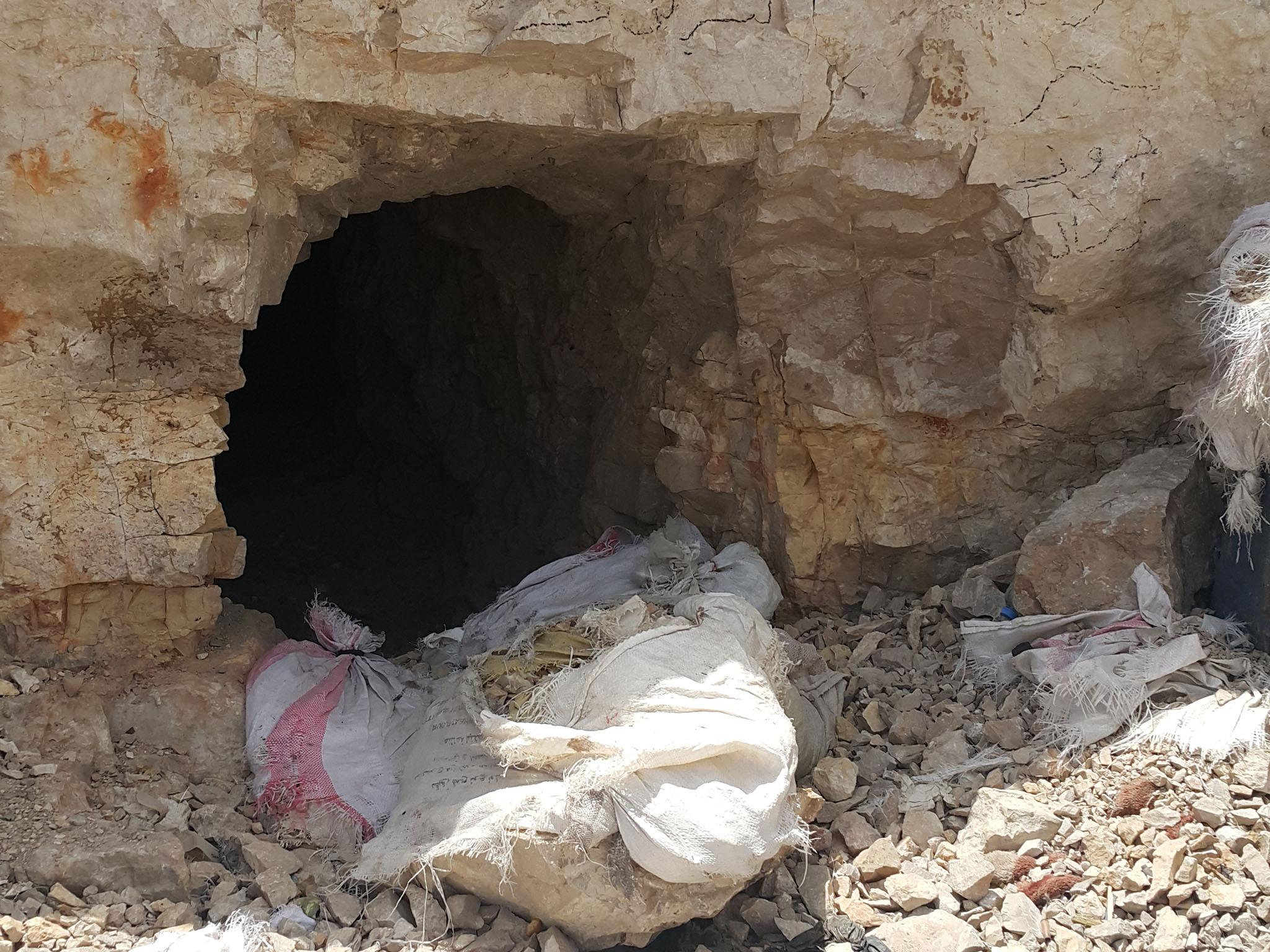
Lebanese troops have raided Syrian refugee camps near Ersal. In their most recent operation, two men blew themselves up, but four others then died in Lebanese custody, suffering – according to the army in Beirut – from already existing “medical problems”. A likely story, as we say, but neither the Lebanese nor the Syrians cared very much.
Nusrah and Isis are now facing total defeat in Qalamoun, and the Syrian army and Hezbollah and the Lebanese army earnestly wish to bring this about. Their elimination will end the Isis threat to the Hezbollah’s supply line down the Hermel-Baalbek highway inside Lebanon and restore secure Lebanese sovereignty to the town of Ersal. The West’s diplomats have been observing this last battle from the Lebanese side of the frontier but of course they cannot come to Syria – and apparently do not realise that Syrian troops are inside Lebanese territory, albeit by only a few hundred metres.
The only Western witness to the Syrian side of the mountain conflict is The Independent, and General Median Abad gave a tactician’s description of the landscape. To the south, around the towns of Zabadani, Bloudan and Madaya, a ceasefire existed between the Syrians on one side and Nusrah and their allies on the other, “reconciliation” talks which may hand the towns back to Syrian control. If they are successful – and the imminent attack on Isis from al-Karra proves victorious – then the entire Syrian-Lebanese border will be clear of Islamists who have frequently fled into Lebanon to avoid Syrian capture and used Lebanon as a military supply route – via Ersal – into Syria.
The area around “Jurd” Ersal – the bare countryside about the town – covers 150 square kilometres of rock, scrub and wind-blasted mountains that lie across both Lebanon and Syria, separated by the narrow dirt frontier track which lies only 500 metres below us.
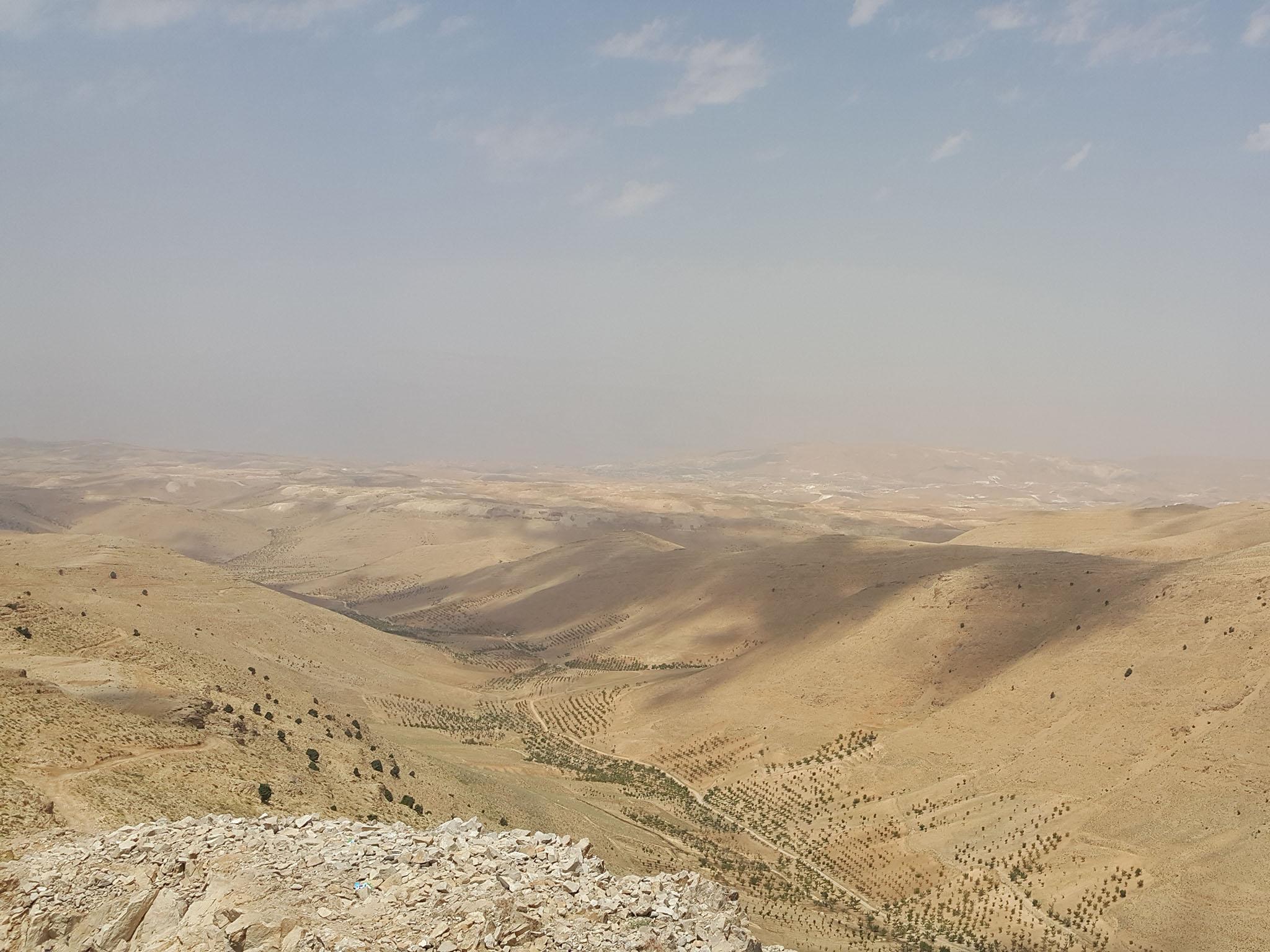
It is a deceptively peaceful trail, drawn – of course – in some French drawing room when the French mandate authorities were dividing up Lebanon from Syria in the early 1920s. It may have made sense in a Paris salon but up on al-Karra, it seems a quixotic creation, full of political and military traps. Perhaps that is what the French intended all those decades ago.
General Abad has a less subtle view of current events. President Bashar al-Assad had early on realised the “international plot” to destroy Syria and the Hezbollah and the resistance – which is why coordination began between Syria, Iran and the Hezbollah, he explained. Israel was the “main supporter of the terrorists”, which was why it attacked Syrian and Hezbollah forces – and why Qatar and Saudi Arabia assisted in this “conspiracy”. “We hear Turkish and Saudi and Qatari voices on the terrorist radios, also Afghan voices speaking bad Arabic,” the general says. “It was after Hezbollah’s victory over Israel in Lebanon in 2006 that many people wanted to disarm Hezbollah as part of the project for a “new” Middle East of [then US Secretary of State] Condoleezza Rice. People in Lebanon were calling for the disarmament and others were trying to take Syria outside the “resistance track”. But we struggled against this – and can now fight Daesh together.”
But Isis will fight back. From their final black mountain stronghold to the north, they are still flying their miniature toy drones southwards towards the Syrian and Hezbollah lines. Further south-east, the Hezbollah and Syrian trucks grind up the mountain road past local farmers and their sons, who are picking fruit from the hanging cherry trees. They hand them to the soldiers as they pass. “The government helped them plant these trees – so why did they give their support to Nusrah when it was here?” Abad asks cheerlessly.
Yes, the cherries of al-Karra are ripe and sweet – and dangerous.